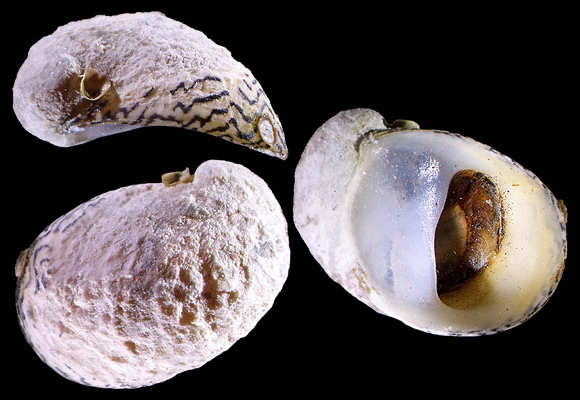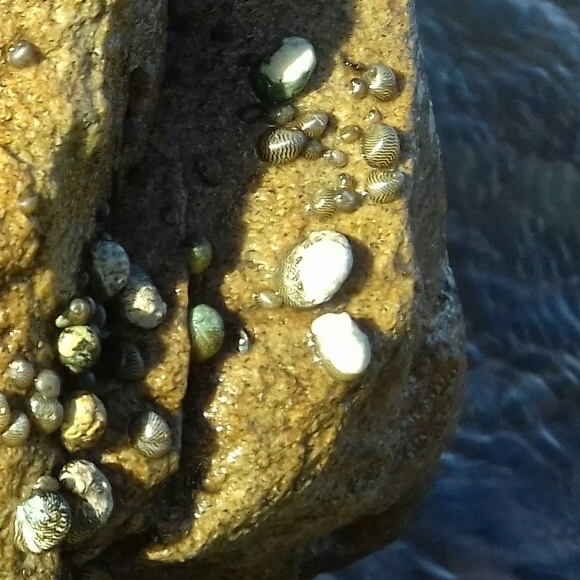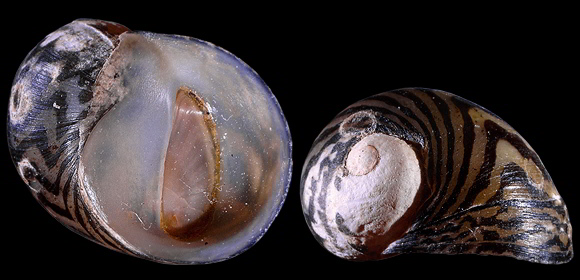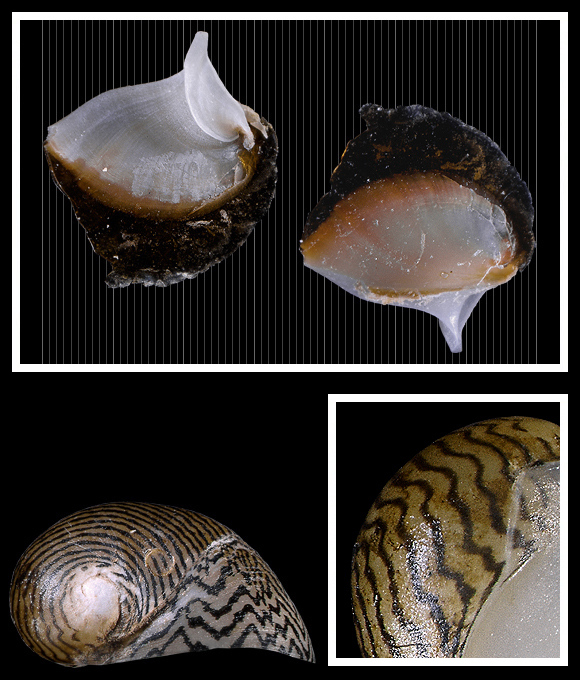
Grazer on vegetation, stones, wood, various debris in large rivers and streams subject to the influence of Aral, Azov and Caspian Seas. Present in the Black Sea during the Pleistocene. Synonyms: astrachanicus, liturata, palasi, schultzii. Above and below: specimens from the Volga river, collected on the pier at Kamyshin, Volgograd Oblast, SW. Russia. 6,8mm.

« Color pattern already starts on early teleoconch as widely spaced, dark yellow to brown curved lines, which pass into slightly irregular zigzag lines with partly dichotomizing branches on last whorl; line width, density, amplitude, color and raggedness varies among specimens and partly within the same individual. […] The regular, widely spaced zigzag pattern is characteristic of the species. Comparable patterns occur in T. danubialis (Pfeiffer, 1828) and occasionally in T. fluviatilis (Linnaeus, 1758), but in these species lines are finer and more closely spaced. They furthermore differ in their less elongated shells. » – Neubauer & al.: “A late Pleistocene gastropod fauna from the northern Caspian Sea with implications for Pontocaspian gastropod taxonomy”, ZooKeys 770, p.50.


« There is large intraspecific morphological variability within this species, especially regarding the radula, shell shape and periostracum colouration (Zettler 2007; Anistratenko et al. 2017; Fig. 19). For example, specimens from deeper parts of the Caspian Sea (T. schultzii-morphotype) may lack colouration and have a broadened columellar plate making the shell look somewhat flattened (Zettler 2007; Fig. 19), while shoreline samples (T. pallasi-morphotype) lack this broadened columellar plate and display clear, black diagonal banding patterning. Inland specimens (T. major-morphotype) from Iran and Armenia tend to be dark and with a less distinct banding pattern. The operculum of this species is somewhat similar to those of T. pallidus, T. fluviatilis, and T. velox with a strong rib-shield and no pseudo-apophysis. » – Sands & al.: “A revision of the extant species of Theodoxus (Gastropoda, Neritidae) in Asia, with the description of three new species”, Zoosystematics and Evolution vol.96(1), february 2020, p.48. – Above: a specimen from the vanishing Aral Sea. Barsakelmes area, Kazakhstan. 8,2mm. The outside of the operculum is more coloured and darker than in danubialis.

On stones and pebbles along the western bank of Volga, near the shuttle terminal, Nachalo, south of Nachalovo, Astrakhan Oblast, delta of the Volga, SW. Russia. 8,2mm.


